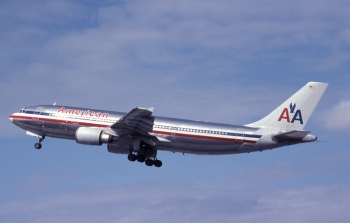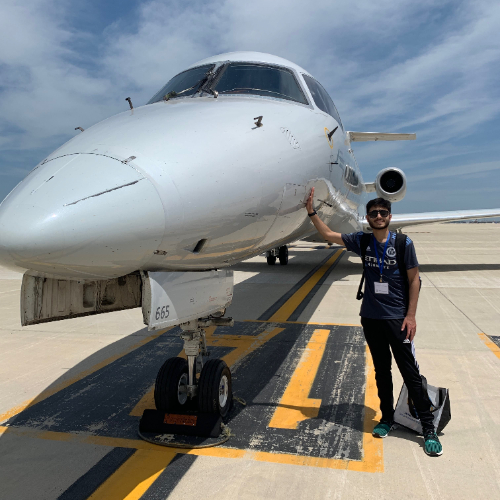Tragedy struck New York City only two months after the attacks on September 11, 2001. This is the tragic story of American Airlines Flight 587, the second-worst aviation accident in U.S. history.

Background
American Airlines Flight 587 was a regular passenger service between New York's John F. Kennedy International Airport (JFK) and Santo Domingo's Las Américas International Airport in the Dominican Republic (SDQ). At the time of the incident, Flight 587 was operated by an Airbus A300. American Airlines took delivery of its first A300 in 1988 and operated 35 examples until the type was retired in 2009.
On November 12, 2001, Flight 587 was operated by N14053, a then 13-year-old A300B4-605R. This aircraft was the first "R" variant of the A300 ever built. The A300 "R" aircraft incorporated an additional fuel tank, thus giving the aircraft more range.
Flights from New York to the Dominican Republic have always been in high demand given the city's high Dominican population, particularly in Washington Heights. Travel to the Dominican Republic, especially during the winter holiday season, is especially a surge.
As such, Flight 587 was full on the day of the incident. All 251 seats, 16 in Business Class and 235 in Economy Class, were occupied. Nine crew members were also onboard, bringing the total number to 260 occupants onboard. Most passengers were American citizens of Dominican descent on their way to visit loved ones.

Tragedy Strikes
Flight 587 was pushed back from the gate as normal and taxied to JFK's Runway 31L for departure. The A300 followed a Japan Airlines Boeing 747-400 that operated Flight 47 to Tokyo Narita. At 9:11:08 Eastern Standard Time, JFK Tower cleared the Japan Airlines 747 for takeoff. Shortly after, at 9:11:36, the tower warned the pilots of Flight 587 regarding wake turbulence from the 747.
Two minutes later, at 9:13:28, Flight 587 was cleared for takeoff on Runway 31L. The A300 rotated or, in other words, lifted off of the ground at 9:14:29. This was roughly one minute and 40 seconds after the preceding 747 had departed. The departure from JFK's Runway 31L is called the "Canarsie Climb." Shortly after liftoff, aircraft are instructed to bank left, and in the process, they pass over the Queens neighborhoods of Howard Beach, East New York, and Canarsie.
Departing flights are instructed to bank left as a means of noise reduction so that they avoid flying directly over much of Queens. Flight 587 made its left turn to a heading of 220 degrees and climbed out as normal for the next minute or so. However, at 9:15:36, the A300's flight data recorder picked up the aircraft hitting wake turbulence from the Japan Airlines 747 that had departed earlier.

In response, First Officer Sten Molin began frantically moving the rudder from right to left around the 9:15:52 time stamp. This violent series of rudder inputs caused the aircraft to sideslip, and the lateral force soon caused the vertical stabilizer to fall off. Composite lugs that fastened the vertical stabilizer (also known as the tail) to the fuselage broke off due to the violent forces caused by the rudder inputs. The A300's tail fell off and into Jamaica Bay.
Following the separation of the tail, the aircraft began to pitch downward, later entering a flat spin as the pilots struggled to control the plane. The forces from the flat spin eventually caused both engines to separate from the aircraft. Losing the engines cut power to the flight data recorder. However, the cockpit voice recorder continued recording.
At 9:16:14.8, almost two minutes after leaving the ground, American Airlines Flight 587 crashed in the Belle Harbor neighborhood of Queens, impacting the ground at Newport Avenue and Beach 131st Street. All 260 occupants, along with five individuals on the ground, perished in the accident.

Aftermath
Because the crash of Flight 587 occurred just two months after the September 11th attacks, many were quick to conclude that the A300 went down due to a terrorist attack. As a precautionary measure, several major buildings in New York City, including the Empire State Building and United Nations headquarters, were evacuated.
The National Transportation Safety Board (NTSB) launched its official investigation on the afternoon Flight 587 went down. After any evidence of terrorist involvement was dismissed, the next plausible theory was that the wake turbulence from the preceding 747 departure caused the A300 to lose its vertical stabilizer and subsequently enter a dive.
However, the NTSB found that the "enormous stress" placed on the vertical stabilizer was attributed to the First Officer's "unnecessary and extensive" rudder inputs, not the wake turbulence. The official accident report found that the First Officer repeatedly moved the rudder from fully left to fully right, causing increasing sideslip angles that contributed to extremely high aerodynamic loads separating the vertical stabilizer.

The NTSB maintained that if the First Officer had stopped moving the rudder before the resultant tail separation, the A300 would have stabilized independently. Airbus blamed American Airlines for the crash. They argued that the airline did not properly train its pilots about the A300's rudder characteristics. The NTSB's findings backed up Airbus' assertion, finding that American's Advanced Aircraft Maneuvering Program (AAMP) exaggerated the effects of wake turbulence on large aircraft.
To maximize training challenges, the AAMP would teach in simulations that wake turbulence from a 747 creates a 90-degree roll rather than the expected 5-10-degree roll. Therefore, pilots were being trained unknowingly to react more aggressively than normal.

The NTSB's statement of probable cause read as follows:
"The National Transporation Safety Board determines that the probable cause of this accident was the inflight separation of the vertical stabilizer as a result of the loads beyond ultimate design that were created by the first officer's unnecessary and excessive rudder pedal inputs. Contributing to these rudder pedal inputs were characteristics of the Airbus A300-600 rudder system and elements of the American Airlines Advanced Aircraft Maneuvering Program (AAMP)."
Following the NTSB report, American Airlines modified its pilot training program. Since 2013, American Airlines no longer operates between JFK and Santo Domingo. Delta Air Lines and JetBlue are now serving this route. A Flight 587 memorial was erected in Rockaway Park, directly east of Belle Harbor, the accident site. The memorial was officially dedicated on November 12, 2006, five years later.
This article was written in memory of those lost onboard American Airlines Flight 587.
Comments (0)
Add Your Comment
SHARE
TAGS
STORIES American Airlines New York JFK Dominican Republic Airbus A300 Airbus A300 Incident HistoryRECENTLY PUBLISHED
 Learjet Owned By Vince Neil Crashes Into Gulfstream Jet, 1 Fatality Confirmed
On February 10th, around 14:30 local time, a Learjet private jet aircraft crashed into another private jet after landing at Scottsdale Airport (SCF) in Arizona.
NEWS
READ MORE »
Learjet Owned By Vince Neil Crashes Into Gulfstream Jet, 1 Fatality Confirmed
On February 10th, around 14:30 local time, a Learjet private jet aircraft crashed into another private jet after landing at Scottsdale Airport (SCF) in Arizona.
NEWS
READ MORE »
 Seattle Plane Strike 2025: Japan Airlines and Delta Collision Raises Safety Concerns
Seattle-Tacoma International Airport saw a concerning incident on Wednesday morning when a Japan Airlines (JAL) plane clipped a parked Delta Air Lines jet while taxiing. Thankfully, no one was injured, but passengers described the collision as a frightening experience.
NEWS
READ MORE »
Seattle Plane Strike 2025: Japan Airlines and Delta Collision Raises Safety Concerns
Seattle-Tacoma International Airport saw a concerning incident on Wednesday morning when a Japan Airlines (JAL) plane clipped a parked Delta Air Lines jet while taxiing. Thankfully, no one was injured, but passengers described the collision as a frightening experience.
NEWS
READ MORE »
 Ethiopian Airlines Expands Cargo Fleet with New Boeing 777 Freighter
Ethiopian Airlines has expanded its cargo fleet with a brand-new Boeing 777 Freighter, registered as ET-BAB (MSN 68140). The aircraft was delivered directly from Boeing’s factory in Everett, Washington, USA, and landed at Addis Ababa Bole International Airport at 3:41 PM (GMT+3) on Wednesday, January 22, 2025.
NEWS
READ MORE »
Ethiopian Airlines Expands Cargo Fleet with New Boeing 777 Freighter
Ethiopian Airlines has expanded its cargo fleet with a brand-new Boeing 777 Freighter, registered as ET-BAB (MSN 68140). The aircraft was delivered directly from Boeing’s factory in Everett, Washington, USA, and landed at Addis Ababa Bole International Airport at 3:41 PM (GMT+3) on Wednesday, January 22, 2025.
NEWS
READ MORE »





